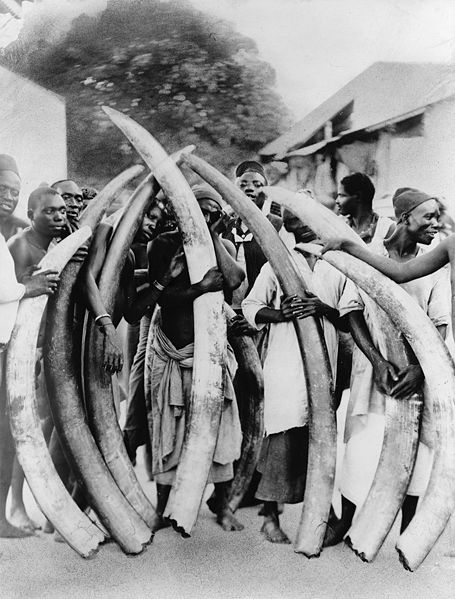Nuclear fallout from Cold War nuclear tests could help to identify poached ivory.
Poaching of elephant tusks and rhino horns is at an all time high, according to  a CITES report released last year, with about 30,000 elephants killed each year. But taking tusks for ivory hasn't always been illegal - a global trade ban only came into effect in 1989 - so when those policing the ban seize an ivory artifact, they need to know when it was actually taken from the animal.
a CITES report released last year, with about 30,000 elephants killed each year. But taking tusks for ivory hasn't always been illegal - a global trade ban only came into effect in 1989 - so when those policing the ban seize an ivory artifact, they need to know when it was actually taken from the animal.
That's where the fallout comes in. It helps with a particular type of radiocarbon dating, which relies on measuring the concentration of carbon-14, a radioactive isotope with a half life of about 5,700 years. Carbon-14 is produced when energetic neutrons hit nitrogen atoms; normally, these neutrons are produced when cosmic rays smash into our atmosphere.
Plants absorb that radioisotope along with the carbon dioxide they take in. Once they die, the radioactivity slowly dies away as that stock of carbon-14 decays. Measuring where a piece of plant matter is on the decay curve allows you to calculate its age.
There's generally an uncertainty of a few decades on samples younger than 10,000 years, and you need various fiddle factors in there to get a reliable answer, not least because of human activity skewing carbon-14 concentrations. The nuclear bomb tests of the 1950s and 1960s, for example, threw lots of hot neutrons into the atmosphere that almost doubled carbon-14 levels.
Now scientists led by Kevin Uno at Columbia University have proved that you can get accurate dates on relatively recent material by doing radiocarbon dating from the bomb curve itself. Publishing in PNAS, They took 29 samples of hippos teeth, elephant tusks, and hair, that were collected on known dates between 1905 and 2008 in East Africa, and measured the levels of carbon-14 using accelerator mass spectrometry.
They calibrated the results against the detailed measurements of carbon-14 made around the world since those bomb tests. This allowed them date any tissues formed after 1955 to within a year or so - in some cases, within 4 months.
This could form part of a suite of tools in 'wildlife forensics' - such as DNA analysis - which is helping to pinpoint exactly where and when a piece of ivory was actually taken. And it also provides valuable evidence to shore up prosecutions.
Those involved in stamping out ivory poaching need all the help they can get. That illegal trade is estimated to be worth $5-10 billion per year, and it has grown markedly since 2006.
- Previous The taste of male fertility
- Next Quickfire Science: Wildfires










Comments
Add a comment